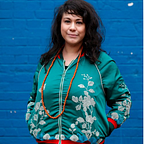Make your mark on the world’s favourite travel app (and learn about usability evaluation at the same time)
Ironhack Challenge 3: Usability Evaluation and Site Redesign
Usability Evaluation, testing and redesign — no self-respecting, budding UX designer can go without learning how to do this. Given current travel restrictions, what better way to while away a rainy afternoon by dreaming up fake holiday scenarios and finding people to test out some apps?!
After playing on Hopper (cute), Kayak (fueled by Booking.com) and Tripadvisor (created for you, by you), and evaluating the apps against the Nielsen heuristics usability evaluation principles, I decided to go for Tripadvisor to try out my first ever usability test.
Tripadvisor feels like it truly offers anything you need to know about a trip, from flight and accommodation information to personal reviews, suggestions and advice on the destination, provided by other travellers. It is the world’s biggest travel platform, helping 463 million users per month with 867 million traveller reviews and comes in 28 languages.*
With such a unique edge and great stats to boot, I wondered whether what gives Tripadvisor the edge in a competitive market, could also be it’s pitfall? Can you really get everything you need for an upcoming trip through using just the one app?
My user group is one that is easily available to me — a small group of friends (40–60 years old), who want to go on a comfortable holiday to somewhere exotic and for whom budget is not too tight. The destination I have in mind is Penang, Malaysia — a popular destination for backpacking and luxury getaways, it is bound to offer a wide range of recommendations and a variety of things to do, places to eat, sights to see, etc. Penang is doable in about 3–5 days, depending on what you like to do — it is a foodies paradise with outdoor pursuits and some cultural sights. Some sights are religious and for this reason, it is recommended that both men and women dress respectfully (always wear a t-shirt for both — no going around bear-chested or in a spaghetti strap top). Also bring swimwear.
Tripadvisor performs well. On the homepage, you can immediately enter the desired destination and it will bring you to the destination’s homepage, which lists accommodation, recommendations on where to eat, etc and even articles on the destination that might be of interest. Or you also have the option of narrowing down the search to just flights or accommodation or whatever it is that you specifically need from the homepage itself.
All information from either original homepage or destination homepage, including booking flights, hotels, etc does not require leaving the app. The app will bring you to a third party site to book flights, for example, but you still remain in the app and are able to get back to the homepage easily. On the destination homepage, aside from recommendations, they include articles of interest on places to visit in Penang, including film set locations from “Crazy Rich Asians’’, which becomes a topic of conversation with each user! Clickage is minimal, the design is easy to navigate and the brand easily recognizable on each screen. So thumbs up overall.
However, one outstanding issue keeps cropping up. The destination homepage does not allow you to look at flights. You have to go back to the original home page to look up flights. This doesn’t make sense and seems to be solved by a very simple solution! And this is when I have my eureka moment — add a flight option to the destination homepage!
So I set to work on a low fidelity prototype:
And then I moved on to creating an interactive prototype:
At first, this challenge seemed like a really big task — how could little old me, a beginner in the ux design world who hasn’t even started, let alone finished, a UX design course, possibly redesign one of the world’s most popular and widely used apps? This was quite an intimidating step to take and a tad overwhelming. But in the end, there is always room for improvement in almost anything you encounter in this world, even things that you use everyday and without thinking.
I also came to realise that no matter how you might view something, someone else will have a different opinion or experience. Ultimately, the user interviews unveiled an issue that I had not foreseen. And no matter, how slick or efficient a product is, it always goes back to whether a consumer decides to use your product or not.
- Information from US Press Center — https://tripadvisor.mediaroom.com/US-about-us
